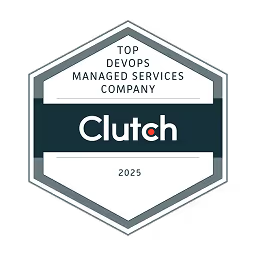







































.avif)
.avif)
.avif)
.avif)
.avif)
.avif)
.avif)
.avif)

.avif)
.avif)
.avif)
.avif)
.avif)
.avif)
.avif)
.avif)

.avif)
.avif)
.avif)
.avif)
.avif)
.avif)
.avif)
.avif)


Ethereum validator nodes secure the network with 32 ETH staked using Proof-of-Stake. They propose new blocks, validate transactions, and earn rewards for contributing to network stability. Dysnix deploys and manages your dedicated ETH validator node directly within your environment. This ensures full ownership and control of your Web3 project.

Validator selection in PoS is based on staked Ether (ETH). The more ETH staked, the higher the chance of being chosen to propose blocks and validate transactions. This incentivizes validators to act honestly, as slashing penalties exist for misconduct. Everyone benefits—validators earn rewards for honest participation, and the network remains secure.

Becoming a Validator requires staking 32 ETH, which acts like a deposit to ensure you follow the rules. Technical knowledge is recommended for maintaining your node software and keeping it up-to-date. Consider it an investment in the future of Ethereum and a way to earn passive income through ETH rewards.

Validator nodes are important for Ethereum 2.0, bringing:

Validators earn ETH rewards for successfully validating transactions and adding new blocks to the Ethereum network. The exact amount of ETH you can earn depends on various factors, including the total amount of ETH staked in the network and the number of active Validators. Generally, current estimates suggest annual returns (in ETH) can range from around 4% to 10%. It's important to note that these are just estimates, and the actual rewards may fluctuate.
This system encourages people to participate and keeps the network running smoothly, benefiting everyone who uses Ethereum.

Yes, there's a minimum stake requirement of 32 ETH to participate in the consensus process as a Validator. This stake acts as a security deposit, ensuring validators have a vested interest in following the network rules.
Interesting fact: The minimum stake requirement was originally set much higher at 32,000 ETH! This was later adjusted to 32 ETH to encourage broader participation and decentralization within the network.

Technically anyone can, but it's best suited for those who:

Ethereum 2.0 achieves greater decentralization by distributing the power to validate transactions among multiple Validator Nodes. This reduces the risk of centralization and enhances the overall security and trustworthiness of the Ethereum network. The core idea behind Ethereum is to create a global, open financial system. Decentralization is crucial to achieving this because:

No, Validator Nodes are for Ethereum 2.0's Proof-of-Stake (PoS) system, while the current network uses Proof-of-Work (PoW). This means existing tools might not work with Validator Nodes. The shift to PoS presents both hurdles and exciting possibilities for developers who adapt to Ethereum:

Ethereum 2.0 is being implemented in multiple phases. While the Beacon Chain (Phase 0) launched in December 2020 and the Merge (Phase 1.5) occurred in September 2022, further development is ongoing. Here's a simplified breakdown of the key stages:
Future phases (subject to change):
For the most up-to-date information on the implementation timeline, it's best to refer directly to the Ethereum Foundation: https://ethereum.org/en/roadmap/